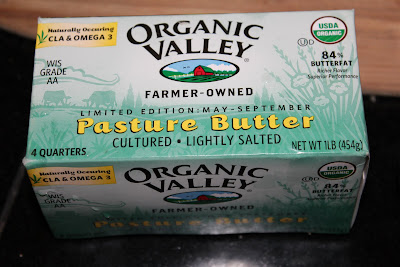Remember, everyone is different - but this is what has worked for me. Check with your doctor before starting or stopping any medication or supplement.
1. Antronex by Standard Process

Antronex acts as a "natural" antihistamine in the body and is the one supplement I take every day. Histamine is released when tissue becomes damaged, inflamed, or is subjected to environmental stressors. Histamine contributes to the overall inflammatory cascade that contributes to disease over time, so it's important to manage your histamine levels as much as possible. Antronex is made up of bovine liver fat extract that has been researched since the 1920s for its liver supportive and blood filtering capabilities that help more quickly process histamines. Thus, it is liver supportive, which most medications are not.
I take 3 Antronex pills every morning during most of the year. The pills are pretty small and very easy to swallow. During the height of allergy season - spring and fall in Arizona - I take an additional 3 before bed. I notice a dramatic difference if I forget the Antronex, and it doesn't have the negative side effects of drowsiness or insomnia that other allergy medications can have.
You can purchase Antronex through a licensed health care provider such as myself or on Amazon.
2. GUNA Sinus Nasal Spray

If pollen and other irritants are really bad, I use GUNA Sinus Nasal Spray, a homeopathic remedy, to help keep the environment of my sinuses and nose healthy. I spray 2 spritzes into each nostril and wait a few minutes before blowing my nose. It seems to really help when used as needed.
3. Neti Pot with Tea Tree Oil


I have used a neti pot on and off for years. A neti pot looks like a small tea pot, and you pour the spout into one nostril to irrigate your sinuses. Periodic neti pot usage can help flush dirt, allergens (read: evil yellow pollen), pollutants, and bacteria-filled mucus from your nasal cavity. Typically, I would use the packets provided with the neti pot to create the flushing solution. (Note: you do not want to pour straight water into your nose because it will irritate the tissue even further if it does not contain salt.) My fantastic chiropractor Mark Force recommended the following neti pot solution that ups the ante a bit:
6 oz clean warm water (distilled or boiled - there are serious risks to using tap or unclean water)
1/4 tsp. Celtic sea salt (find at Whole Foods)
1-3 drops of tea tree oil (Whole Foods - start with one drop and work up)
The tea tree oil adds an additional antiseptic quality that helps flush out bacteria and other microbes that could be hanging out up there. You probably don't want to use the neti pot for months on end, but it's especially helpful during allergy season or when your sinuses are especially troublesome. I always use it after I've been out in a dusty area, like a baseball game or to ride horses. (OK, that was only once. But I did use a neti pot afterwards.)
4. Source Naturals Wellness Formula

Say you're really struggling with allergies and can start to tell that you're heading toward a sinus infection. You have pressure above or below your eyes, it is becoming harder to breathe, and you're starting to produce some not-so-pleasantly-colored mucus. If you can catch it in time, start taking 2-3 tablets of Wellness Formula right at the beginning of an infection. If it doesn't help you kick it, at least it might help shorten the duration.
I have had some fantastic personal and professional success with this product, which is a mishmash of multiple immune system supporting vitamins and herbs, and I keep it in my purse in case I start to feel "off." You don't want to take it long term, however, because some of the ingredients (e.g. echinacea) lose their effectiveness if taken regularly. Full disclosure: this stuff is chock full of garlic, so it has a pretty strong odor. I'd recommend taking it with a few hefty gulps of water and some food. You can buy it at Whole Foods, Sprouts, and other health food stores.
5. Fish Oil

One of the few supplements I recommend to almost everyone is fish oil. It helps reduce general inflammation, making it part of my daily preventive arsenal. Lately I have really been diggin' Nordic Naturals ProDHA 1000. It even tastes like strawberries! Take at least 2 capsules per day with food. If you don't like to take your fish oil as a pill, eat the real deal! Fatty fish such as salmon, tuna, and mackerel are the best way to get fish oil. Make sure to eat 3 5-6 oz servings per week of sustainable, low-PCB, low-mercury fish like wild caught salmon.
I hope I gave you a few ideas for preparing for one of the most beautiful - and troublesome! - times of the year, which is fast approaching! What are your allergy remedies? Leave a comment below!
*M*










